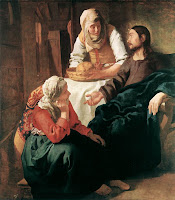7 reasons why I won’t pay to see ‘The King’s Speech’
Jonathon Freedman wrote a stunning piece in the Guardian today about the true meaning of this hagiographic film. It’s an old tale, no doubt well told, beautifully filmed and well-acted. But so were Nazi films like Triumph of the Will. It’s not enough to have high production values; you must also have real values.
Myth of the commoner
In fact, the Australian did not live in a terraced house whose door opened straight out into dirt poor children playing in the street, in what looked like the East End. He actually lived in a 25 room mansion on Sydenham Hill with five bathrooms, five acres of garden, a tennis court and a cook! His offices were on Harley Street. The Lionel Logue character is a lie. In fact, they had to pull back from an even cruder depiction of the speech therapist as commoner, when his grandson pointed out that he was in fact, a rich man who moved in aristocratic circles. This is not dramatic licence as it destroys the very premise of the film, Royal and commoner all in this together (sound familiar). It is a scripted lie.
George VI was anti-Semitic
George V showed anti-Semitic tendencies, as his telegram in 1939 to Foreign Secretary Lord Halifax showed. He wanted the Jews, who were clamouring to escape, to stay in Germany and got Halifax to make these feelings clear to the Germans. Let’s be clear about this, many lives could have been saved if there had been a more receptive attitude to the plight of the Jews at this crucial time.
Brother was a Nazi
George VI was only King because his hapless brother had to abdicate. Edward VIII, his brother, and King in 1936, was clearly a Nazi sympathiser. He abdicated because of establishment views on marrying an outsider but remember that the first thing he did in 1937 was tour Nazi Germany, against the advice from the British Government. There he gave Nazi salutes and even during the war his houses in France were guarded by German troops. There is even evidence that he leaked war plans to the Germans.
Royal Family was for appeasement
The Royal family was for appeasement. In blood terms, and that’s all that Royalty is, they were as much German as British. Edward VIII had no problem in touring Germany because he had so many relatives there. Hitler famously claimed that, “If he had stayed, everything would have been different. His abdication was a severe loss for us.” As Ian Jack points out, the crowds that appear in the film didn’t appear at the gates of Buckingham Palace in 1939. People at that point were a bit sick of the wayward Nazi tendencies of the Royals.
Dianification of our culture
That old myth of the upper and lower classes having a lot in common. Why do ‘Royal’ films like these continue to get funding, to the detriment of emerging talent and films that should get made but don’t? Remember that every one of these Royal movies sucks funds away from other projects and pushes other movies out of the schedule. It’s the Dianification of our culture. They know their market, a fawning, older, middle-class audience that wants the certainty of old structures and hierarchies. It’s no accident that the film was released hard on the heels of the Royal Wedding announcement. We have, through the BBC and our film industry created the Royal propaganda genre. That’s where the Director Hooper cut his costume drama teeth.
Affected Colin Firth
Then there’s the sales potential of that most ‘Mills & Boon’ actor, Colin Firth, who even in real life (watch his Golden Globe speech) affects that brooding Heathcliff manner. He’s made a career out of making the miserable appear thoughtful. The man truly has hidden shallows, and don’t imagine for one minute that sultry silence means depth.
Honours not Oscars
Our film industry has its eyes not on film awards but honours. The hideous Julian Fellowes, swanning about in ermine, being put in the House of Lords, was perhaps the most disgusting image I’ve seen this year. The man who dishes up an endless loop of second-rate, country house, costume drama, finally gets his Lordship. Putnam went all gaga, and never did a damn thing after he was made a Lord. Dame Helen Mirren has morphed into some sort of Royal proxy, holding her head as if she were royalty itself. Helena Bonham Carter, will, of course, inherit her tiara. They know, Directors and actors alike, that a gong and garden party, will allow them to die happy, when in creative terms, it’s the kiss of death.
The King’s Speech will not triumph at the Oscars, as the American’s know that films should be in some sense relevant. The Social Network is a stunning commentary on our modern world, Inception a wildly imaginative piece about the mind. In the end the Americans know that we like nothing more than to chew on the sickly toffee of nostalgia. While they have an eye on the future we’re still looking backwards.






